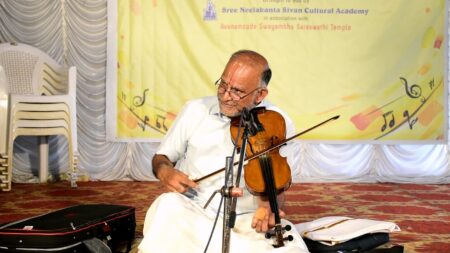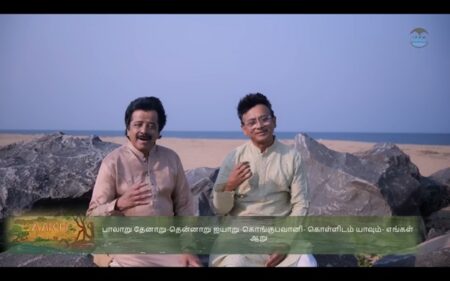Dos and Don’ts to optimize vocal health for performance and presentational voice users.
Voice is essential for every individual. It serves as a potent medium for conversation, presentation, and expression. Naturally, any voice disorder becomes immediately apparent to the listener, if not to the speaker. Numerous individuals rely on their voice for their livelihood, and in this age of visual media proliferation, their numbers are steadily increasing. Due to the strain they place on their vocal mechanism, these individuals are more susceptible to developing voice-related disorders, which can cause great distress. If not properly addressed, these issues can even curtail a career.
Professional voice users can be categorized into two groups: presentational and performance voice users. Presentational voice users are individuals whose jobs require frequent use of their voice, including advocates, teachers, salespeople, clergy members, orators, and TV presenters. The other group, performance voice users, comprises actors, singers, dubbing and mimicry artists, and ventriloquists. Their demands on their voices are even greater, making them more prone to voice strain. To comprehend these problems, physicians need to understand not only vocal physiology but also the specific performance or presentation contexts.
Caring vocal tract
We are familiar with the three integral parts of the vocal tract: the bellows (lungs), vibrators (vocal cords), and resonators (supraglottic air column). The driving force for vocal fold function is the expiratory air blast. To have a good voice, it is imperative to have controlled expiration, which, in turn, depends on healthy lungs, heart, and chest cage.
There are two types of normal inspiration and two types of abnormal inspiration. The normal types are chest or thoracic breathing and abdominal or diaphragmatic breathing. In chest breathing, the chest cage expands horizontally due to the action of the external intercostal muscles. This type is more common in females. Abdominal breathing involves the contraction of the diaphragm, increasing the chest cage’s volume vertically. This is the most powerful type of breathing and is more commonly seen in males.

The abnormal types of breathing include clavicular or neck breathing and paradoxical breathing. Excessive activity of the neck muscles, especially the sternomastoids, characterizes neck breathing. This technique requires significant effort but produces minimal results in terms of chest volume expansion. Paradoxical breathing is the opposite of abdominal breathing. During inspiration, the diaphragm, instead of flattening, becomes more convex, reducing chest volume expansion seen in chest breathing. Both of these techniques, if detected, need correction to prevent the development of voice strain.
One simple test for assessing breath power is checking the maximum phonation duration, which should typically exceed ten seconds. Higher values are preferable for professional voice users. Numerous exercises can help improve breath power, including regular deep breathing exercises, Pranayama, and the Sudarshana Kriya. Blowing up balloons and playing wind instruments are also beneficial for children. Another useful exercise involves attempting to blow out as many candies as possible in a single breath.
The next step involves examining the vocal cords for any organic or functional disorders. Structural lesions are easily detected. However, to identify functional anomalies, the examiner should be aware of the various muscle tension dysphonia patterns. Types II and III, as described by Kauffman and Morrison, are more common among professional voice users. Most structural lesions of the vocal cords require phonomicrosurgery, while muscle tension dysphonia can be addressed through voice therapy.
Recognizing and correcting voice abuse
Identifying and rectifying vocal abuse and misuse are of paramount importance when dealing with professional voice users. Vocal abuse encompasses speaking or singing too loudly and quickly, doing so in noisy or polluted environments, and using alcohol or tobacco before using the voice. The most common misuse of the voice stems from using an inappropriate pitch. Ideally, the optimal pitch and habitual pitch should be the same or very close to each other. When they are far apart, it is likely to lead to voice strain.
The third part of the vocal tract is the resonating chamber. Resonance imparts individuality and character to the voice. The soft palate and tongue position play significant roles in controlling resonance. Excessive or insufficient nasality is undesirable. A voice professional should have the ability to control nasality deliberately, depending on the emotional context.
In modern medicine, we recognize only one remedy for enhancing vocal cord performance, and that is water. Adequate hydration is a prerequisite for the healthy functioning of the vocal cords. Therefore, substances like alcohol, coffee, and antihistamines are detrimental to the smooth operation of the vocal cords due to their dehydrating effects. Acid reflux is another factor that can cause vocal cord dehydration and should be avoided. In this context, the importance of maintaining regular and healthy dietary habits cannot be overstated.

Two crucial concepts for professional voice users are warming up and vocal pacing. Similar to sports, warming up before a performance minimizes the risk of vocal cord injury and optimizes performance. Vocal pacing involves determining the correct sequence for performing numbers. It is advisable to place the most challenging number somewhere in the middle of the program rather than at the beginning or end. The question of whether a voice professional should perform while having a cold is frequently raised. In the case of a trained professional, it may be allowed after explaining the pathophysiology and suggesting precautions.
Professional voice care is a challenging and captivating field that continues to evolve. The treating physician must invest ample time with the patient to identify and address the problem. It is immensely helpful if the physician also possesses a basic understanding of these arts.
To be continued…




